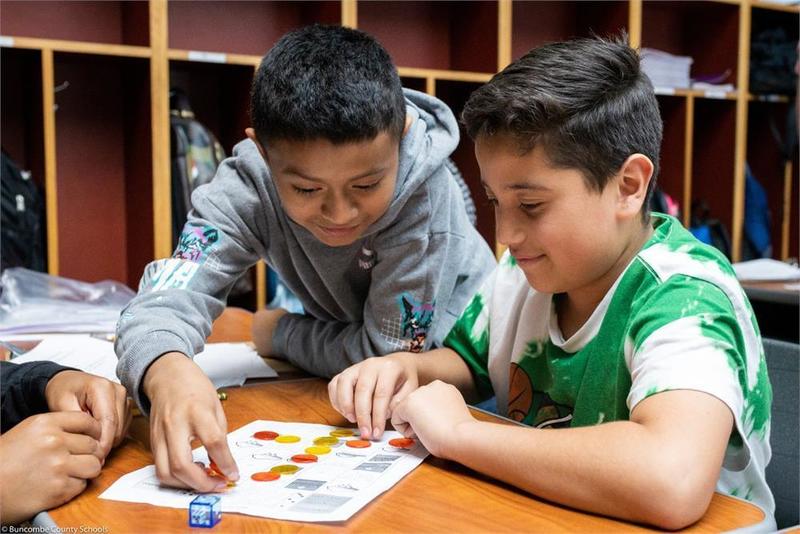Joe P. Eblen Intermediate School (JPEIS) fifth-graders were ready to ace their science end-of-grade tests after participating in an innovative science festival last week.
For the school’s two-day Science Slam, JPEIS teachers and BCS science curriculum specialists joined forces to review an entire year’s worth of big science concepts in a convention-style schedule full of hands-on activities in eight classrooms. Each classroom featured a different science focus, like genetics and cells, force and motion, friction and gravity, weather, and more.

“This is a fun way for them to mix up with students from other classes, learn the science from new teachers, and learn it in a new way,” said BCS Science Specialist Brian Maccarelli.
“These two days are pretty comprehensive, and it’s amazing to watch them remember things from the beginning of the year,” added Elementary STEM Coach Carla Billups.
The fifth graders learned about barycenters (centers of mass), by watching a teacher throw two balls tied together by a string. Ms. Billups had them design their own weather fronts to better recall the physical representations of cold fronts versus warm fronts versus stationary and occluded fronts.
In Ms. Melanie Norton’s class, they recalled the difference between physical and chemical changes by touching “goo.” It was tricky, because the goo looked different from the water and powder ingredients, but neither were permanently changed.
“If you left this out and let the water evaporate, what would you be left with?” She asked the class as she held up the slimy concoction. “That’s right, the powder. It’s just like saltwater evaporating and leaving the salt behind or sugar water evaporating and leaving sugar crystals behind. I didn’t change what this was made of. I just changed how it looks and feels.”
She and other teachers worked hard to center hands-on, immersive activities during Science Slam.
“It creates a real experience for the kids that they can remember and connect with what they’ve learned,” she said. “They’re seeing, hearing, and touching instead of just reading about it.”


